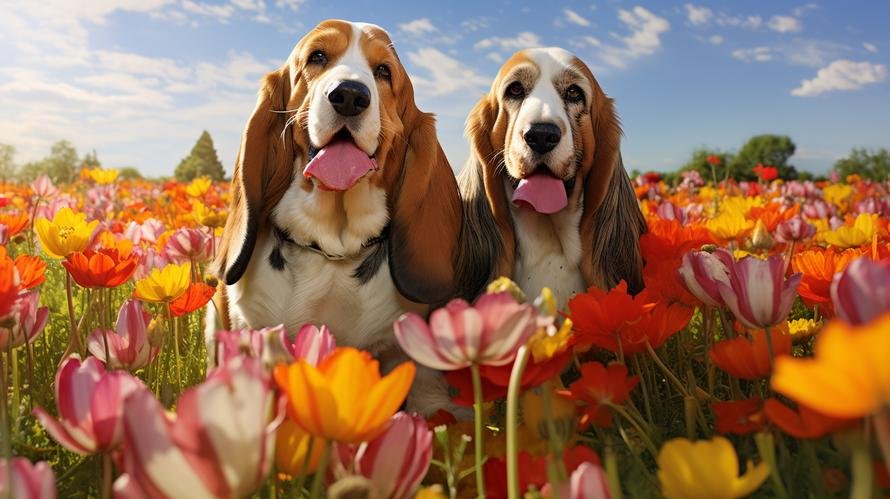Well, did you know that the Petit Basset Griffon Vendéen, affectionately known as the PBGV, is not just a cute and shaggy companion but also a tenacious little hound with dietary needs as unique as their personality? That’s right, the lovable “Happy Hound” from the French countryside, known for its robust vitality and striking appearance, has nutritional requirements that are just as distinctive as their perky ears and spirited bark.
The Basics of a Balanced Diet for PBGVs
When we’re talking about feeding your PBGV, we need to think about balance. Just like humans, dogs need a mix of protein, carbohydrates, fats, vitamins, and minerals to keep them in tip-top shape. High-quality dog food often has these elements woven into the mix, but the PBGV breed has an energetic nature and may require fine-tuning when it comes to their diet.
Protein: The Muscle Builder
Proteins are the building blocks for a healthy doggo, and for the PBGV, meat, eggs, and fish should feature prominently in their diet. These provide the essential amino acids needed to build muscle and repair tissue. But keep in mind – not all proteins are created equal. Look for food that lists real meat as the first ingredient, ensuring your furry friend gets the best source of protein.
How Carbs and Fats Fuel the Fun
Carbohydrates are also key to keeping your PBGV’s energy levels consistent throughout the day. Good quality sources, like wholesome vegetables and brown rice, are better than filler grains or corn, which some dogs might find harder to digest. Fats, on the other hand, such as those from fish oils, provide the necessary fatty acids like omega-3 and omega-6, which are crucial for a healthy coat and skin—not to mention, brain function!
Vitamins and Minerals: Small but Mighty!
Don’t overlook the importance of vitamins and minerals either. These small, yet mighty, nutrients support everything from bone health to metabolism. The right dog food will include fruits and vegetables that provide antioxidants and essential vitamins, and may even feature supplements such as glucosamine for joint health—a significant consideration for this active, long-backed breed.
Specific Needs of the PBGV
One interesting thing to consider is that the PBGV, with their keen sense of smell and roots in hunting, may benefit from a diet that mimics what their ancestors might have eaten. A more natural, minimally processed diet with a variety of different protein sources can be incredibly beneficial – think a “rotation diet” to avoid food sensitivities and keep mealtime interesting.
Weight Management: Keep the Pudge at Bay
PBGVs love their food, and they’re not above using their charming personalities to coax an extra treat or serving. This means that weight management is a critical piece of the dietary puzzle. Meals should be appropriately portioned, and snacks should be healthy and not too frequent. Remember, obesity can be a significant health issue for any dog, especially one built like the PBGV.
Get the Right Kibble Size
When choosing a kibble, consider the size and shape relevant to a PBGV’s jaw and dental health. Smaller kibbles designed for medium-sized breeds can help ensure that your dog maintains good eating habits and oral health, reducing the risk of dental problems that can be common in small breeds.
Allergies and Sensitivities: Know Thy Dog
Just like us, some PBGVs may have food allergies or sensitivities, often to common proteins or grains. If your dog is itching excessively, losing hair, or experiencing digestive distress, it’s worth considering an elimination diet under a vet’s guidance to pinpoint the troublemaker.
Wet Food vs. Dry Food: A Heated Debate
The wet food versus dry food debate is a hot topic among dog owners. While dry food can be convenient and great for dental health, wet food is often more palatable and hydrating. Our advice? A combination of both might offer the best of both worlds for your PBGV, satisfying their taste buds while looking out for their teeth and hydration needs.
Treats: The Icing on the Cake
And of course, what’s a meal without dessert? Treats should be given sparingly and, ideally, should be as nutritious as they are delicious. Bits of lean meats, carrots, or apple slices can be wonderful treats that are also good for your PBGV.
Key Takeaway: The Best Food is Customized
In a nutshell, there’s no one-size-fits-all answer to the best food for your PBGV because each dog is an individual. A mix of high-quality commercial food, along with the occasional supplement of fresh, whole foods, can come together to create a varied and balanced diet. It’s also important to adjust food types and portions as your dog ages, keeping an eye on their health and activity levels.
Always Involve the Professionals
Always remember to consult your veterinarian when planning your PBGV’s diet, especially if you’re considering home-cooked meals or a raw diet, which can be tricky to balance. Professional input ensures your PBGV is getting everything they need and nothing they don’t.
With a bit of planning, a dash of knowledge, and a sprinkle of love, feeding your Petit Basset Griffon Vendéen can be a delightful part of your life together. By providing your furry friend with the best nutrition tailored to their unique needs, you’re setting the table for a long, happy, and healthy life. After all, a well-fed PBGV is a happy hound, and a happy hound makes for a joyful household.



